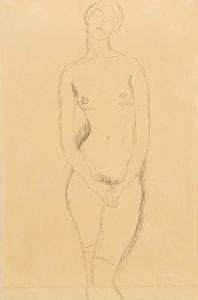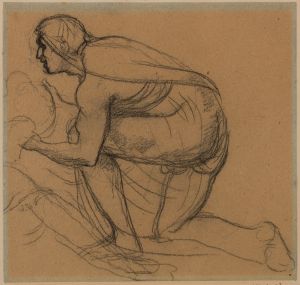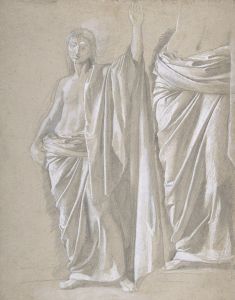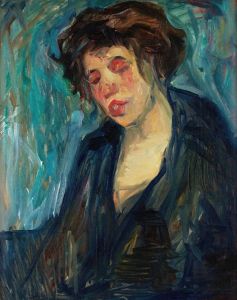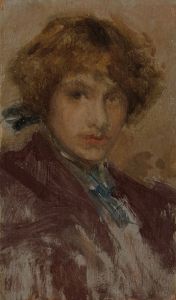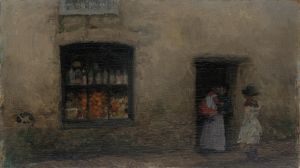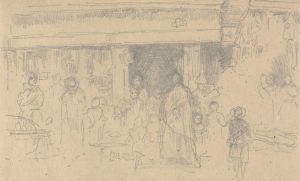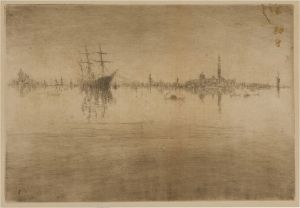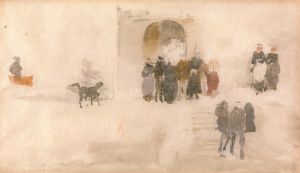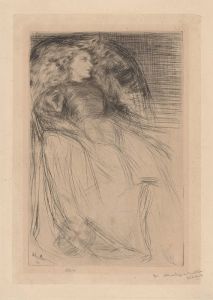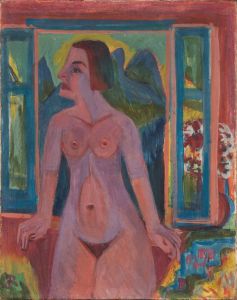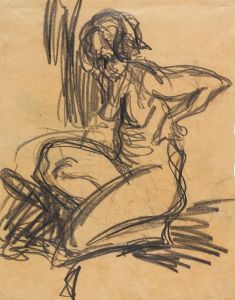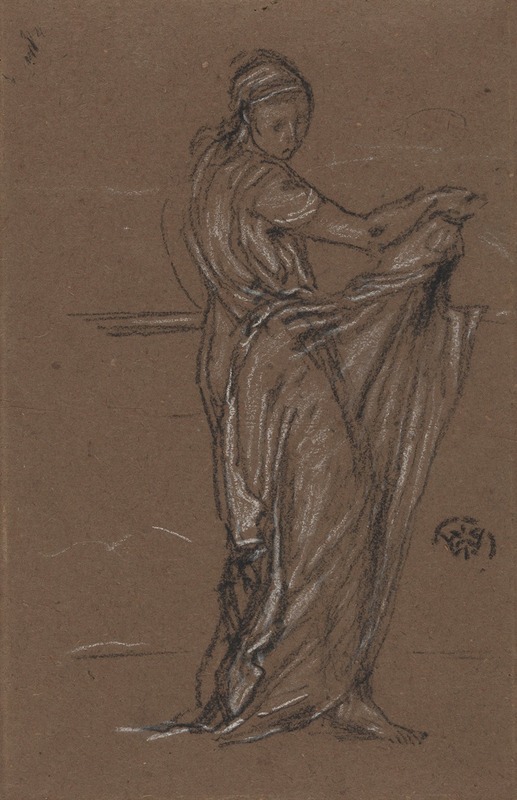
Draped Female Figure
A hand-painted replica of James Abbott McNeill Whistler’s masterpiece Draped Female Figure, meticulously crafted by professional artists to capture the true essence of the original. Each piece is created with museum-quality canvas and rare mineral pigments, carefully painted by experienced artists with delicate brushstrokes and rich, layered colors to perfectly recreate the texture of the original artwork. Unlike machine-printed reproductions, this hand-painted version brings the painting to life, infused with the artist’s emotions and skill in every stroke. Whether for personal collection or home decoration, it instantly elevates the artistic atmosphere of any space.
"Draped Female Figure" is a painting by the American-born, British-based artist James Abbott McNeill Whistler. Whistler, who lived from 1834 to 1903, was a prominent figure in the art world, known for his innovative approach to painting and his influence on the Aesthetic Movement. His works often emphasized mood and atmosphere over detailed representation, and he was a master of both portraiture and landscape.
"Draped Female Figure" exemplifies Whistler's skill in capturing the subtleties of form and fabric. The painting features a woman draped in flowing garments, rendered with Whistler's characteristic delicacy and attention to the interplay of light and shadow. The figure's pose and the treatment of the drapery suggest a sense of grace and elegance, hallmarks of Whistler's style.
Whistler's use of color in "Draped Female Figure" is restrained yet effective, with a limited palette that enhances the ethereal quality of the composition. The painting likely reflects Whistler's interest in the harmony of color and form, a principle he famously articulated in his "Ten O'Clock Lecture," where he argued that art should stand apart from moral or narrative content and be appreciated for its beauty alone.
The exact date of "Draped Female Figure" is not well-documented, but it is consistent with Whistler's mature period, during which he produced some of his most celebrated works. This period includes his famous "Arrangement in Grey and Black No. 1" (commonly known as "Whistler's Mother") and his series of nocturnes, which showcase his innovative use of color and composition.
Whistler's technique in "Draped Female Figure" likely involved the use of thin layers of paint, a method he often employed to achieve a luminous, almost translucent effect. This approach allowed him to create subtle gradations of tone and a sense of depth without relying on heavy impasto or detailed brushwork.
The painting's subject matter—a solitary, contemplative female figure—reflects Whistler's interest in capturing moments of quiet introspection. This theme recurs throughout his oeuvre, where he often depicted women in moments of repose or reflection, emphasizing their grace and serenity.
"Draped Female Figure" is a testament to Whistler's mastery of composition and his ability to convey mood through minimal means. The painting's simplicity belies the complexity of its execution, showcasing Whistler's skill in creating a harmonious and evocative image with a few well-chosen elements.
As with many of Whistler's works, "Draped Female Figure" invites viewers to appreciate the beauty of form and color for their own sake, in keeping with the artist's belief in "art for art's sake." This philosophy was central to Whistler's approach and has had a lasting impact on the development of modern art.
In summary, "Draped Female Figure" is a fine example of James Abbott McNeill Whistler's artistic vision and technical prowess. The painting captures the elegance and subtlety that define much of Whistler's work, making it a significant piece within his body of art.





